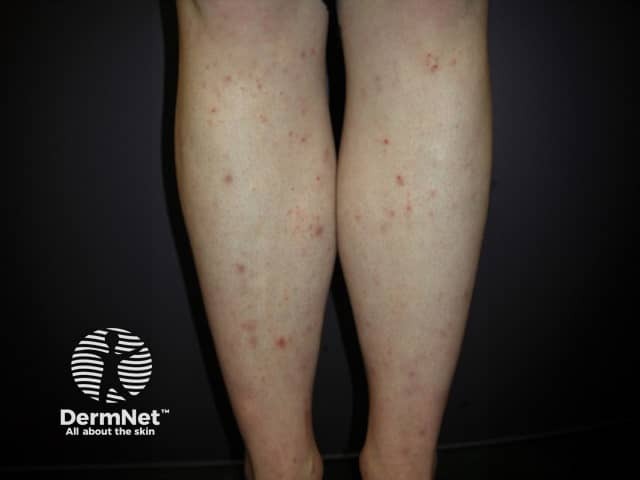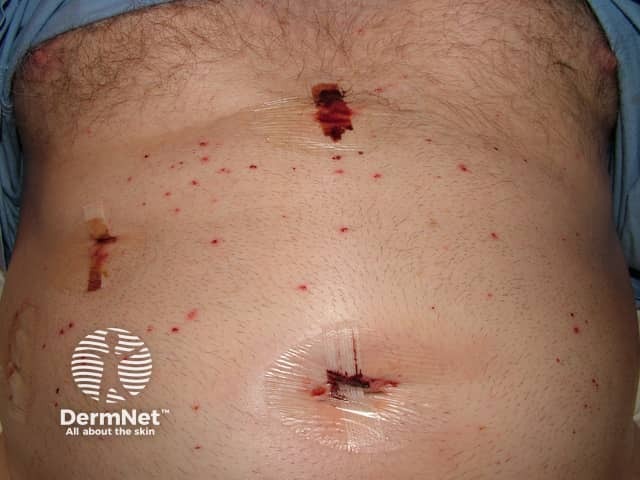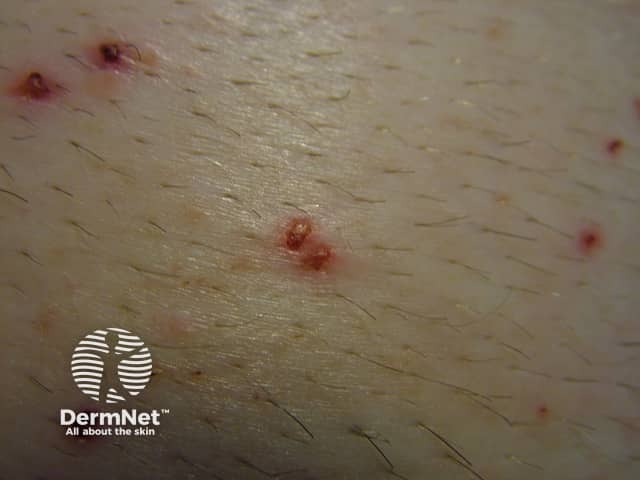Main menu
Common skin conditions

NEWS
Join DermNet PRO
Read more
Quick links
How it works Efficacy Suitability Side effects Uses Precautions
Shaving is most probably one of the oldest and most common methods of removing unwanted hair in both large and small areas. Shaving removes hair by using a razor or any other sharp bladed tool to slice the hair off at skin level. It is the method used by most men to remove facial hair on a regular, if not daily basis as part of their morning grooming. In women, shaving is the most common method used for removing hair from the underarms, legs and pubic area.
Shaving in men has been fashionable since the early 20th century. This habit is attributed to army requirements. Soldiers were obliged to shave during the first world war, to enable close fitting gas masks to be worn to protect during chemical warfare.
There are basically two types of shaving methods, one is the “manual or wet shave” which uses a straight razor or safety razor; and the other is the “dry shave” which uses an electric razor.
The manual or wet shave involves lathering up the area with soap, shaving cream or gel before shaving with a straight or safety razor.
The dry shave is exactly what it says, it is shaving without having to use water or shaving cream. In about the late 1920s Jacob Schick invented the electric razor and dry shaving was born. In an electric razor the blades are hidden behind a perforated piece of metal called a foil. As the foil rubs over the skin the hairs poke through the perforations and are sliced off by the oscillating or spinning blade.
Shaving is one of the fastest and most effective methods of removing hair in large quantities. However, its effects are short-lived because hair will grow above the surface of the skin within several hours, or at best in a few days after the shave. Hence for most men who want to be clean-shaven, daily shaving becomes routine.
The myth that shaving causes your hair to grow back thicker is not true. It may appear that hair grows back thicker but this is because the tip of the hair now has a blunt edge after being cut and as it starts to grow above the surface of the skin it not only feels stiffer but looks thicker too. Compare this to an unshaven hair where the tip has a tapered or beveled edge which makes it softer and lighter.
Almost anyone wanting to remove unwanted hair is a candidate for shaving, males and females. It can be used to remove hair from large or small areas including the moustache, beard, eyebrows, legs, arms, underarms, bikini line and pubic area.
Shaving is very accessible, affordable and painless if done correctly.
Shaving in most instances is safe and painless if done correctly. Side effects from shaving, especially with manual or wet shaving, include:

Folliculitis after shaving legs

Surgical shave

Close-up surgical shaving rash
Shaving cream acts to moisturise the skin, to soften the hair so it is easier to cut, and add an extra layer thus avoiding shaving off the top layer of skin.
Modern shaving creams used for wet shaving are usually dispensed from an aerosol can. The propellent fills the cream with tiny bubbles. Shaving creams are less irritating and more moisturising than soap. Apart from water, they usually contain the following ingredients.
To avoid side effects of shaving the following precautions can be taken:
If after shaving you have irritation or itching you can apply a mild topical corticosteroid cream (e.g. hydrocortisone) to help alleviate the symptoms. Shaving should be avoided until any irritation is resolved.